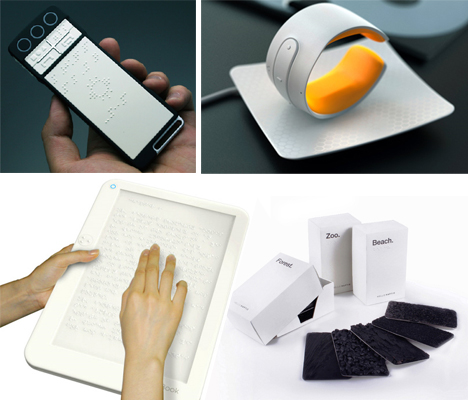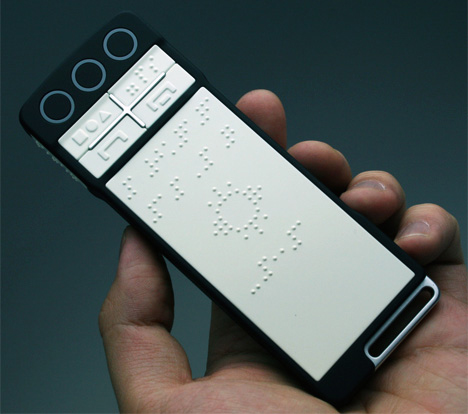Voice-Activated Assistive Devices: Simplifying Regular Tasks
Voice-Activated Assistive Devices: Simplifying Regular Tasks
Blog Article
A Guide to Life-altering Assistive Innovation for the Blind and Aesthetically Impaired
The development of assistive technology has ushered in a transformative period for people that are blind or aesthetically impaired, offering devices that enhance autonomy and improve day-to-day experiences. Developments such as smart navigating gadgets and AI-driven applications are redefining just how customers communicate with their surroundings, while easily accessible reading solutions and clever home modern technologies promise to more raise the lifestyle. As these innovations proceed to develop, one need to consider not only their performances however additionally their influence on fostering independence and inclusivity. What does this mean for the future of ease of access?
Smart Navigation Equipment
Smart navigation tools are transforming the means people who are blind or aesthetically damaged connect with their environment. These innovative technologies, which incorporate GPS, audio responses, and haptic signals, supply customers with crucial information concerning their environments, enhancing their freedom and mobility.
One famous instance is the use of wise walking canes equipped with sensing units that spot obstacles and supply real-time responses via vibrations or audio signs. These tools allow individuals to navigate complex settings, such as busy streets or crowded public rooms, with raised confidence. In addition, wearable tools, such as clever glasses, are being developed to help in recognizing faces, reviewing message, and determining items, further augmenting the user's spatial awareness.
Furthermore, clever navigating devices are progressively incorporating expert system to assess data and adapt to customers' choices. This customized method not just enhances navigation performance however additionally cultivates a sense of empowerment amongst customers. As innovation remains to development, the capacity for smart navigation devices to create a much more accessible and comprehensive world for individuals that are blind or aesthetically impaired remains promising, eventually reshaping their day-to-day experiences and communications.
Cutting-edge Mobile Applications
Mobile applications are emerging as powerful devices for assisting people who are blind or visually impaired, providing a series of capabilities that enhance daily living. These applications harness advanced innovation to promote day-to-day jobs, improve availability, and promote freedom.
One group of cutting-edge mobile applications concentrates on visual acknowledgment. Applications like Be My Eyes connect individuals with sighted volunteers using video clip calls, making it possible for real-time help for jobs such as reading tags or navigating unknown environments. Applications like Seeing AI utilize fabricated knowledge to explain surroundings, read message, and determine items, providing individuals with essential info at their fingertips.
An additional significant area is navigating and alignment. Applications such as Aira and Neighboring Traveler offer audio guidance, aiding users browse metropolitan rooms easily. They use individualized aid, permitting for an extra confident expedition of the setting.
Additionally, health and wellness and health apps satisfy certain requirements, such as drug management and fitness monitoring. These applications aim to promote an all natural method to wellness, guaranteeing that users can maintain their wellness individually.
Wearable Assistive Gadgets
Wearable assistive tools represent a substantial development in modern technology designed to sustain individuals that are blind or aesthetically impaired. These gadgets enhance mobility and independence by supplying real-time feedback regarding the surrounding atmosphere. Amongst one of the most remarkable wearable technologies are smart glasses outfitted with sensing units and electronic cameras, which can identify obstacles and relay important information via sound signs.

One more cutting-edge alternative includes wrist-worn devices that make use of ultrasonic waves to discover obstacles and give navigational help. These tools frequently feature personalized settings, permitting customers to tailor the alerts to their specific needs.
The assimilation of fabricated intelligence in wearable assistive technology is also notable, as it continuously enhances the accuracy and responsiveness of these devices. Overall, wearable assistive devices are transforming the lives of the blind and aesthetically impaired, fostering better freedom and improving lifestyle via ingenious services.
Easily Accessible Reviewing Solutions
Available reading remedies play a vital role in enabling individuals who are visually damaged or blind to involve with text throughout numerous layouts. These options include a series of tools and modern technologies designed to enhance analysis experiences, from traditional print materials to electronic content.
One famous option is Optical Personality Acknowledgment (OCR) technology, which converts published text right into click here for more info electronic format, permitting customers to listen to or read the web content utilizing screen visitors. In addition, specialized e-readers equipped with text-to-speech capabilities supply personalized reading experiences, making it possible for users to change font dimensions and background shades for improved exposure.
One more reliable technique is braille displays, which supply tactile comments by converting electronic message right into braille. This permits people to go through touch, promoting greater freedom and accessibility to literature. Mobile applications created for checking out checked books or files can encourage individuals with instant access to a substantial collection of products (Smart glasses for the visually impaired).

Smart Home Technologies
Smart home innovations have actually changed the method individuals who are aesthetically damaged or blind engage with their living environments, boosting both self-reliance and safety and security. These innovative options take advantage of automation and connectivity to create an obtainable living space tailored to the demands of individuals.
Smart speakers and voice-activated aides give hands-free control over various tools, permitting users to readjust lighting, temperature, and safety steps with basic voice commands. This functionality minimizes reliance on sighted assistance and fosters a feeling of autonomy. Additionally, wise lights systems can be tailored to provide acoustic feedback or tactile hints, allowing individuals to navigate their homes extra effectively.
Moreover, safety systems furnished with clever video cameras and sensing units can send out real-time notifies to users, improving personal safety without demanding visual confirmation. Automated door locks provide comfort, enabling users to secure their homes effortlessly.
Incorporating wise home innovations not just boosts day-to-day living yet likewise motivates social interaction through connected devices - Wearable technology for low vision. With continuous advancements in assistive innovation, the future appears encouraging, as more solutions will arise to additional equip people that are blind or aesthetically impaired, making sure a much more inclusive and independent way of living
Conclusion
To conclude, the developments in assistive technology for the aesthetically impaired and blind represent a significant jump towards boosting freedom and top quality of life. Smart navigating tools, ingenious mobile applications, wearable tools, available analysis remedies, and smart home innovations jointly cultivate a comprehensive setting. This assimilation of technology not just improves flexibility and everyday stylish glasses living yet likewise empowers people to involve totally with their environments, promoting better autonomy and participation in society.
Advancements such as clever navigating devices and AI-driven applications are redefining exactly how users interact with their surroundings, while obtainable reading options and smart home modern technologies guarantee to more raise the top quality of life. As technology continues to advancement, the capacity for wise navigation devices to create an extra accessible and comprehensive globe for individuals who are blind or visually impaired stays appealing, inevitably improving their daily experiences and interactions.
Wearable assistive devices represent a a knockout post considerable innovation in technology made to sustain people who are blind or visually impaired. Amongst the most significant wearable innovations are smart glasses furnished with cams and sensors, which can identify obstacles and relay vital information via sound signs.
Smart navigation devices, ingenious mobile applications, wearable tools, obtainable reading solutions, and wise home technologies jointly foster an inclusive setting.
Report this page